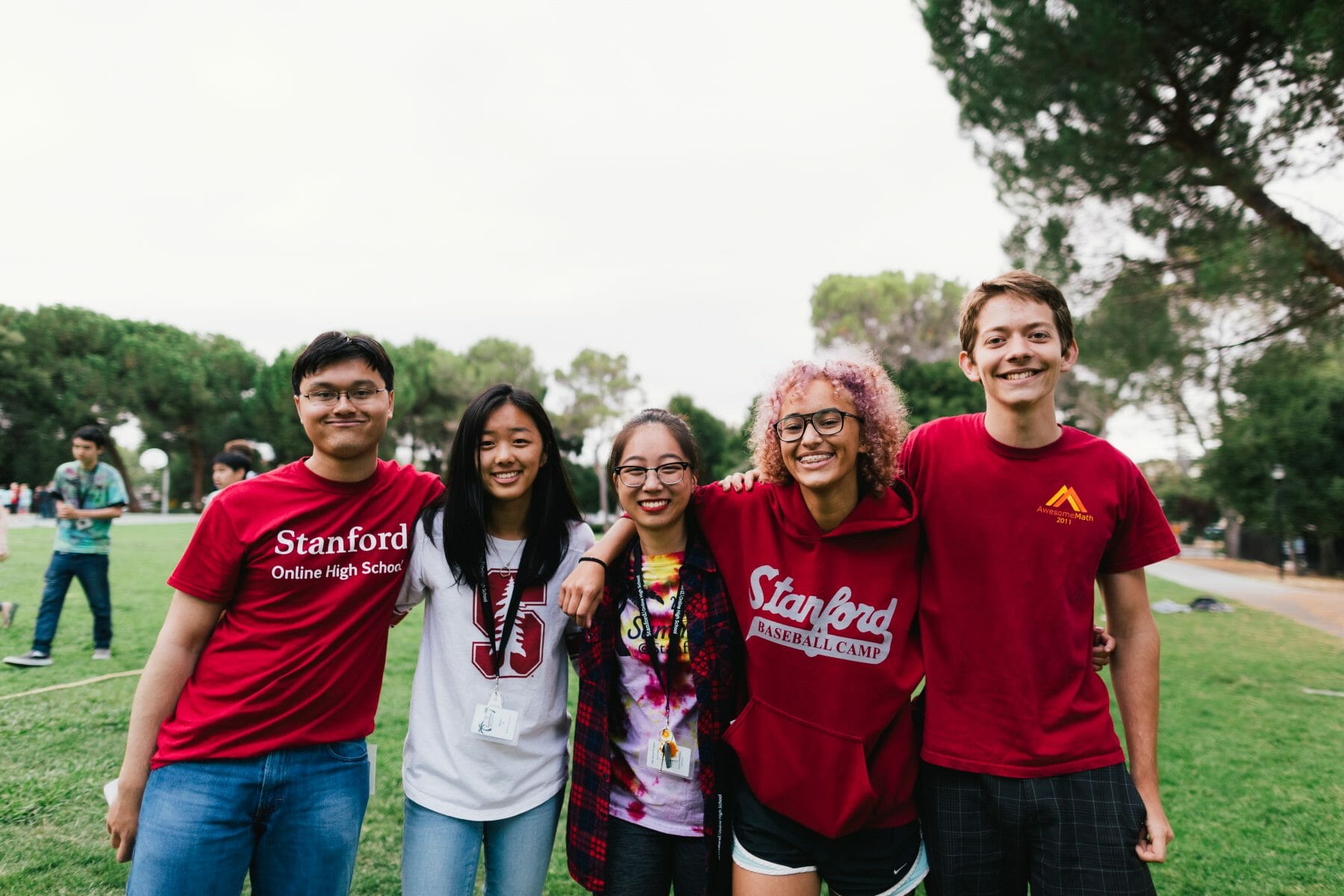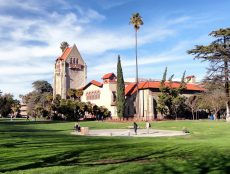
Articles
Editor’s Picks
Fostering Community and Wellness in an Online High School
By Cait Etherington
October 18, 2017
Part 3 of a Three-Part Series on Stanford Online High School
Every high school advisor or counsellor deals with unique challenges, but imagine trying to foster a sense of community and general wellness when your student body is based in 46 states and 32 countries around the world. This is precisely the challenge that faces Dr. Tracy Michelle Steele, Stanford Online High School’s Director of Counseling.
“Our student body is very eclectic,” says Steele, “We have students in rural areas who have exhausted the curriculum at their local student and are looking for a challenge. We also have pre-Olympic swimmers and skiers who are training and need a flexible alternative. We have students who are sailing around the world with their families. Some of our students come from diplomat families and are moving with their parents to different posts.” Regardless of a student’s reason for applying, Steele notes that careful attention given to ensuring that the applicant is a good match for the school’s delivery format. This is especially important at the middle school level. “At the middle school level,” she emphasizes, “Every incoming student has an interview with a member of our team.”
Since joining Stanford OHS over seven years ago, Steele has overseen many changes to help support how the school approaches advising: “This was a new experience—when I joined, we were really in start-up mode—but the idea of an online high school certainly now seems much more viable.” Notably, since Steele arrived at Stanford OHS, the school has grown from about 200 students to 750 students. The school has also scaled up its advising department: “When I started, I was doing academic advising, counselling, and even registration. We now have nine advisors supporting about 750—about half of these students are full-time.”
Steele also notes that the Stanford OHS now uses an approach that is typically used on college and university campuses: “We’ve hired people with specific expertise and experience in college admissions to handle college advising and counsellors with a psychology background to address social issues—it is a very specialized staff, which one doesn’t always find at the high school level.”
Online High School Students Face New and Familiar Challenges
In many respects, online high school students have the same concerns as other high school students. As Steele observes, “We have fewer bullying problems than a typical high school, but I think most concerns that come up are quite similar in a face-to-face environment, but there are some unique challenges.” One is scheduling student classes across multiple time zones. To help mitigate problems, Stanford OHS offers its earliest classes at 6:00 am (Pacific Standard Time) and its final class of the day after 9:00 pm, but for a student living in Japan, finding the right classes at the right time still can still be a challenge. “We have many time zone differences,” says Steele, “Still, students may be in Asia and trying to find classes that fit their schedule and in the end, choose to get up at 5:00 am for a class. This is not ideal for any teenager, since they naturally tend to stay up and wake up later.”
Building Connections with Students and Teachers

Unlike many online high schools, Stanford OHS makes a considerable effort to foster connections between students and teachers—connections that have the same depth and quality as face-to-face classroom interactions. As Steele explains, they do this by deploying many different strategies: “One way we foster connections is by offering office hours before classes. We also do this by offering peer-support groups.” However, the structure of the classroom is also important. Relying on a “flipped classroom” model, students typically cover a lesson on their own and then come together for just over an hour to explore the ideas and concepts they have just learned in a seminar.
Dr. Anthony Smith, a history teacher and the Director of Curriculum at Stanford OHS, elaborates on the importance of the school’s seminar model “Different subjects have different approaches but synchronous discussions are expected,” he says, adding “Everyone is expected to participate and the discussion are hopefully driven by student questions but naturally still guided by instructors. It’s a collegiate-style seminar but geared toward students at a younger age.” Smith observes that while the online classroom experience continues to evolve and appears to feel more natural now than it did in 2010—in part due to the fact that students now spend more time interacting with peers and family on platforms such as FaceTime—technology still does impact the experience: “We have to be mindful of how our technology is impacting the experience. For this reason, I think it is important that everyone can see everyone else—this can be a bit challenging since screen size can be a factor, but it is important.”
Notably, at Stanford OHS, personal connections are not restricted to the classroom. “We have many clubs—we try to limit the number of clubs to 30—but they are very active,” says Steele. As detailed on the school’s website, Stanford OHS’s current clubs range from familiar types of high school club such as yearbook, debate, and photography to more esoteric offerings that include everything from a Latin club to Art of Memory Society to Virtual Reality Society. And for the record, while sports teams are not a central part of Stanford OHS, the school does have an athletics club.
Stanford OHS Hosts Annual Prom for Virtual High School Grads
Despite the fact that Stanford OHS is a virtual high school, Steele notes that it does incorporate in-person experiences, including some that may come as a surprise. “One of our highlights is our prom,” says Steele. “It is not a typical prom—students don’t necessary all come with a date, some do, but it is not necessarily the case. But students love this event.” However, Stanford OHS’s in-person experiences begin long before prom.
“We have our summer program at Stanford, and we have something in the fall. We also go to MIT for an event,” says Steele. She adds, “Generally, we’re trying to encourage a more blended approach. Moving forward this will mean having meet ups in Japan and other locations, since our students are located around the world.” Of course, there are still some notable limitations, since not all parents can afford to fly their children to California or another location to attend a meet up. To help support more in-person experiences, the school is currently fundraising and moving forward, Stanford OHS hopes to be able to offer more travel subsidies to ensure their commitment to blended learning is fully accessible to all students.









No Comments